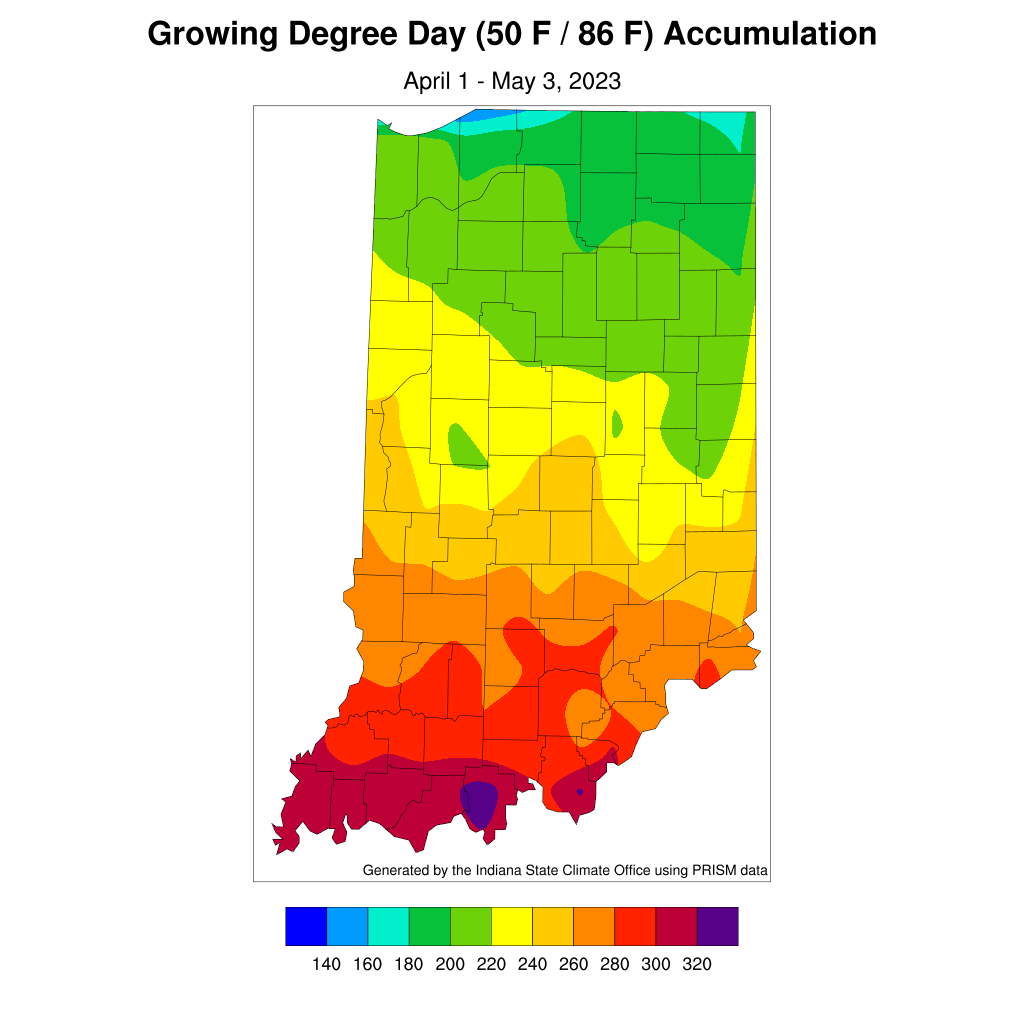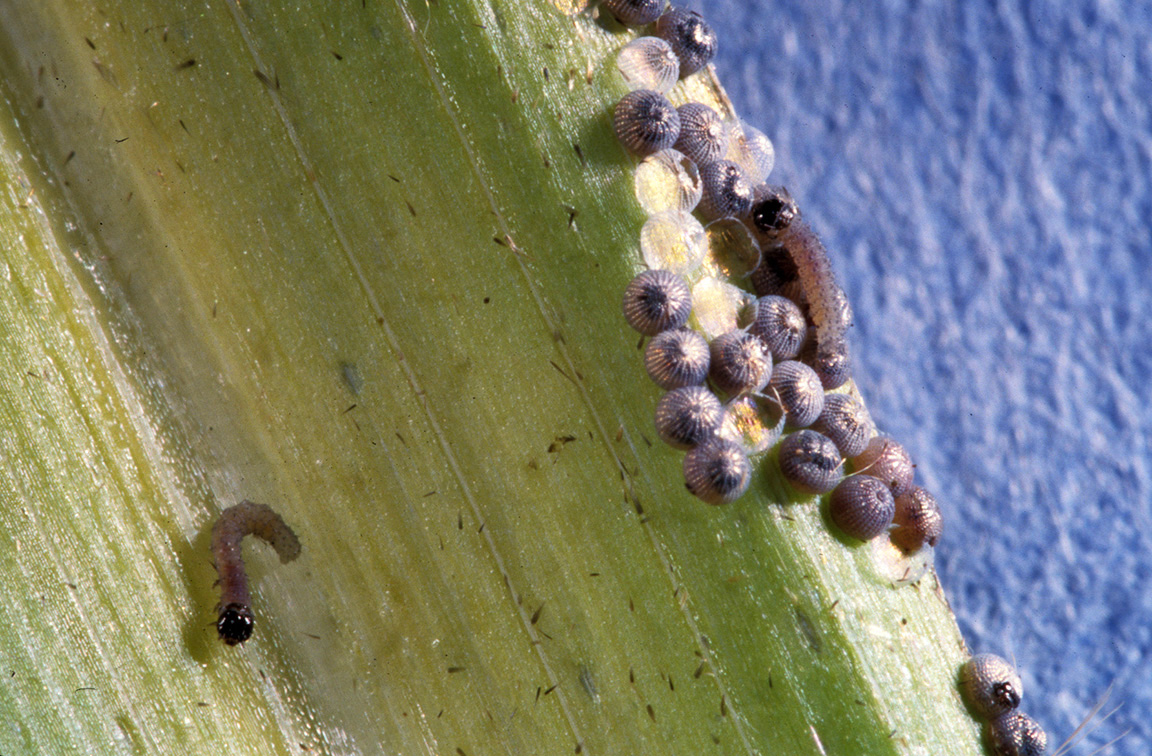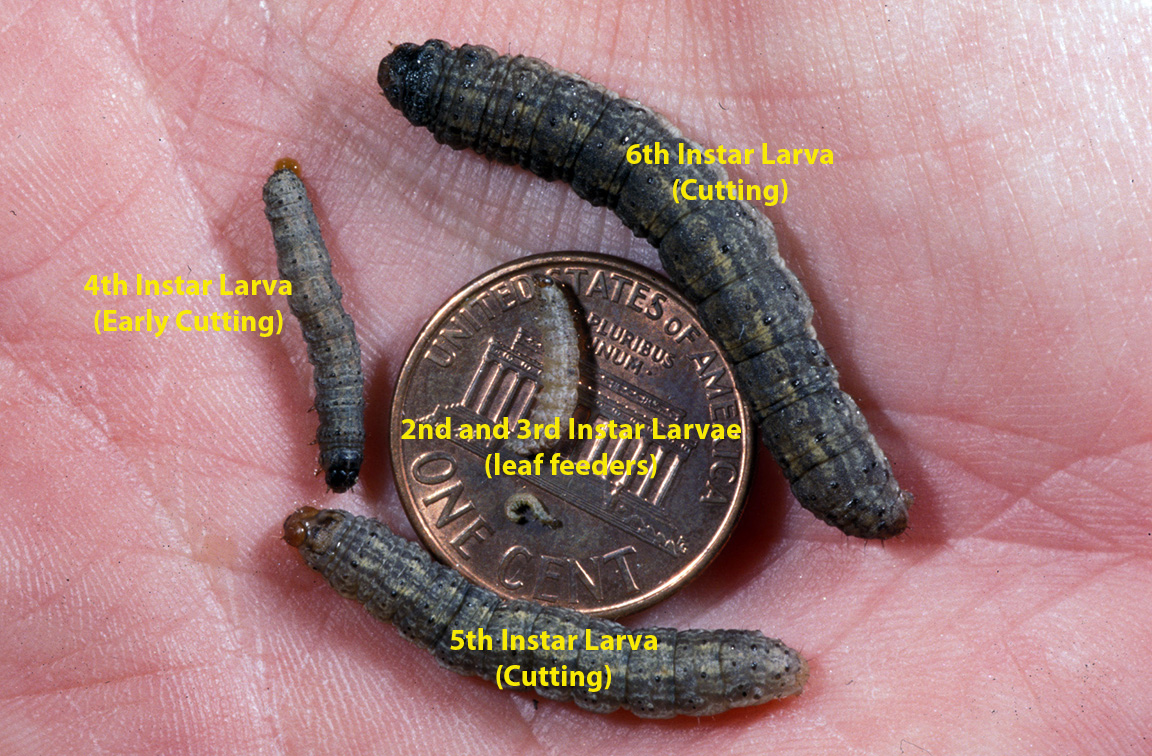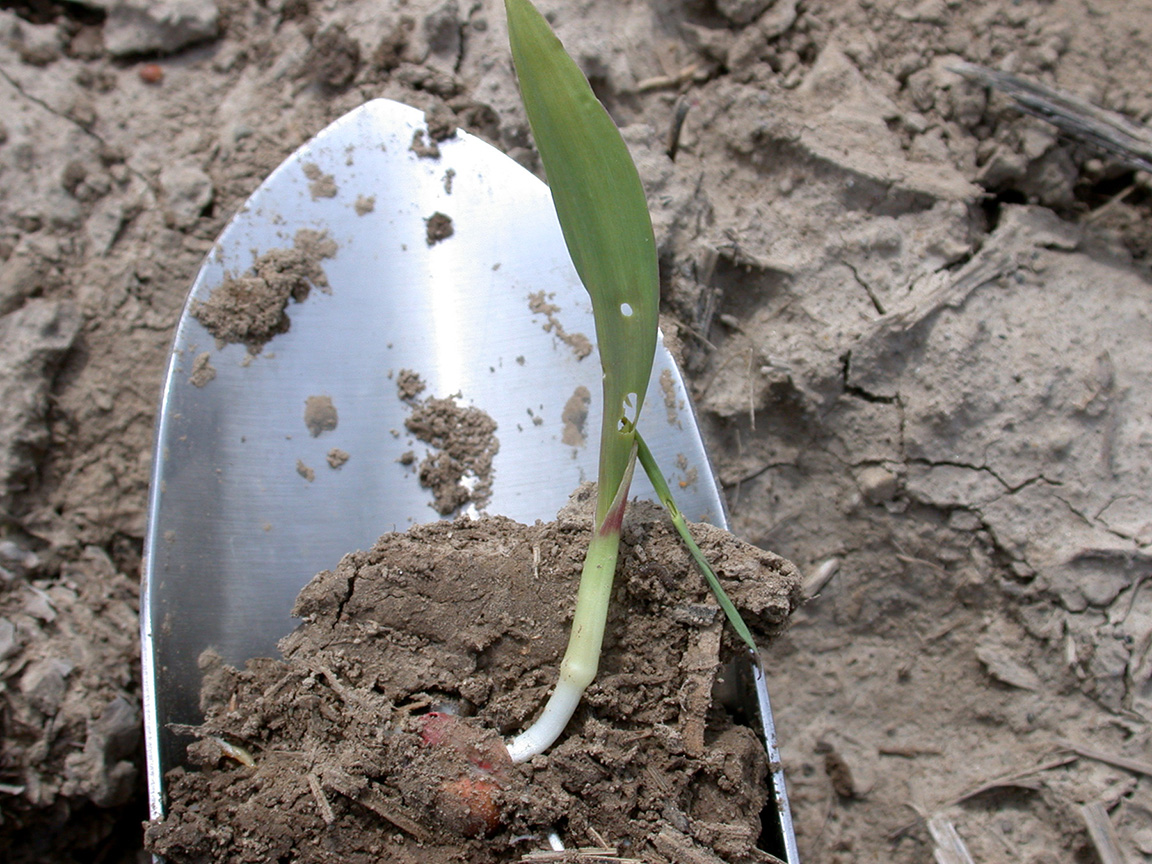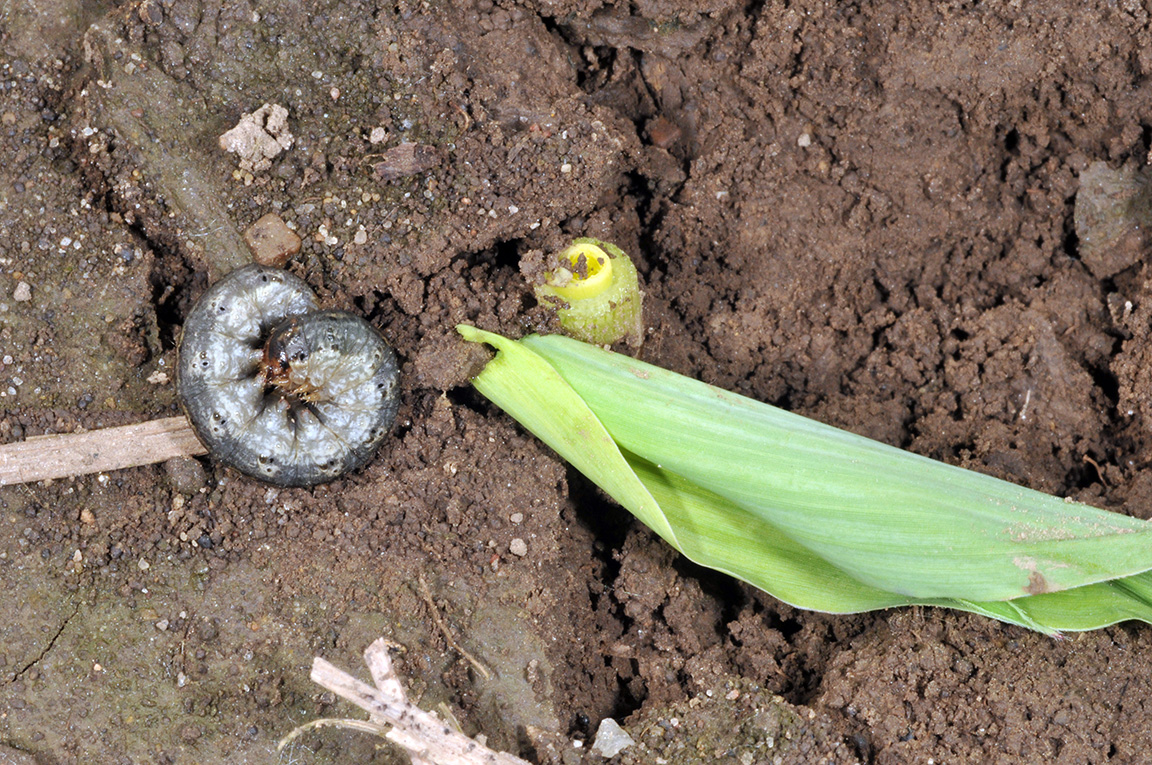Once again, we urge you to view the “Black Cutworm Pheromone Trap Report.” For the fifth consecutive week, our volunteer trappers have been busy counting captured moths, e.g., lots of intensive captures. On April 1, after severe storms arrived in the state, the trappers were detecting “moth-ageddon.” There was panic at first, then fear. But, as we have seen in the past, these captures are more like an alert to start scouting, than they are an indication of certain pressure and damage.
However, what is certain is that conditions recently have been favorable for these “fair-weather pests”; they are not very freeze-tolerant as larvae. Due to a lack of widespread hard freezes since then, we initiated heat unit (50°F base) accumulations (“biofix”) to determine their rate of development, see accompanying state contour map below.
Back in the mid-1970’s, researchers* from the University of Illinois published the approximate heat unit accumulations for each life state of the black cutworm, see pictures below. Although these data are almost 50 years old, there is no reason to think that the amount of heat units required for larvae to develop has changed since then. Take a look at the chart below, and compare with the map at bottom – at this time of year, the part of the state where you are planning scouting matters a great deal.
| Cumulative Degree Days | Black Cutworm Stage | Activity |
|---|---|---|
| 0 (biofix) | Intensive moth capture | Egg laying |
| 90 | Hatch | |
| 91-311 | 1st – 3rd instar larvae | Leaf feeding |
| 312-364 | 4th instar | Cutting initiates |
| 365-430 | 5th instar | Cutting |
| 431-640 | 6th instar | Cutting |
| 641-989 | Pupa to moth | Pupation in soil |
| *modified from Luckmann et al., Journal of Economic Entomology, June 1976 | ||
From the previous moth captures, the heat unit (50°F) accumulations since biofix, and the above development table, you can now better time your scouting trips for high-risk emerging corn (i.e. when black cutworms are likely to be large, and corn is small, and there is nothing else for them to eat!)
Remember this: lots of black cutworm moths does not an outbreak make! Without a litany of ecological/biological/meterological reasons why, let’s just say that it takes a “perfect storm” of variables for black cutworm to survive and damage to our crops. Stay tuned!
The following graphics may help in recognizing black cutworm and their damage:


